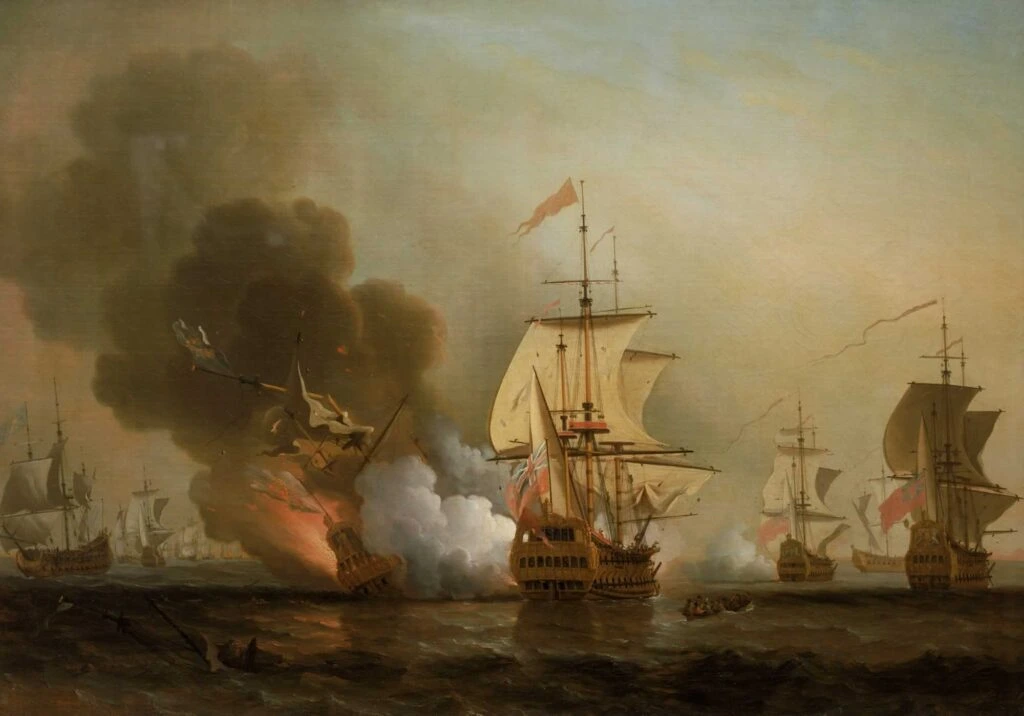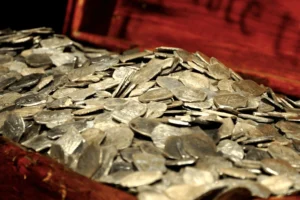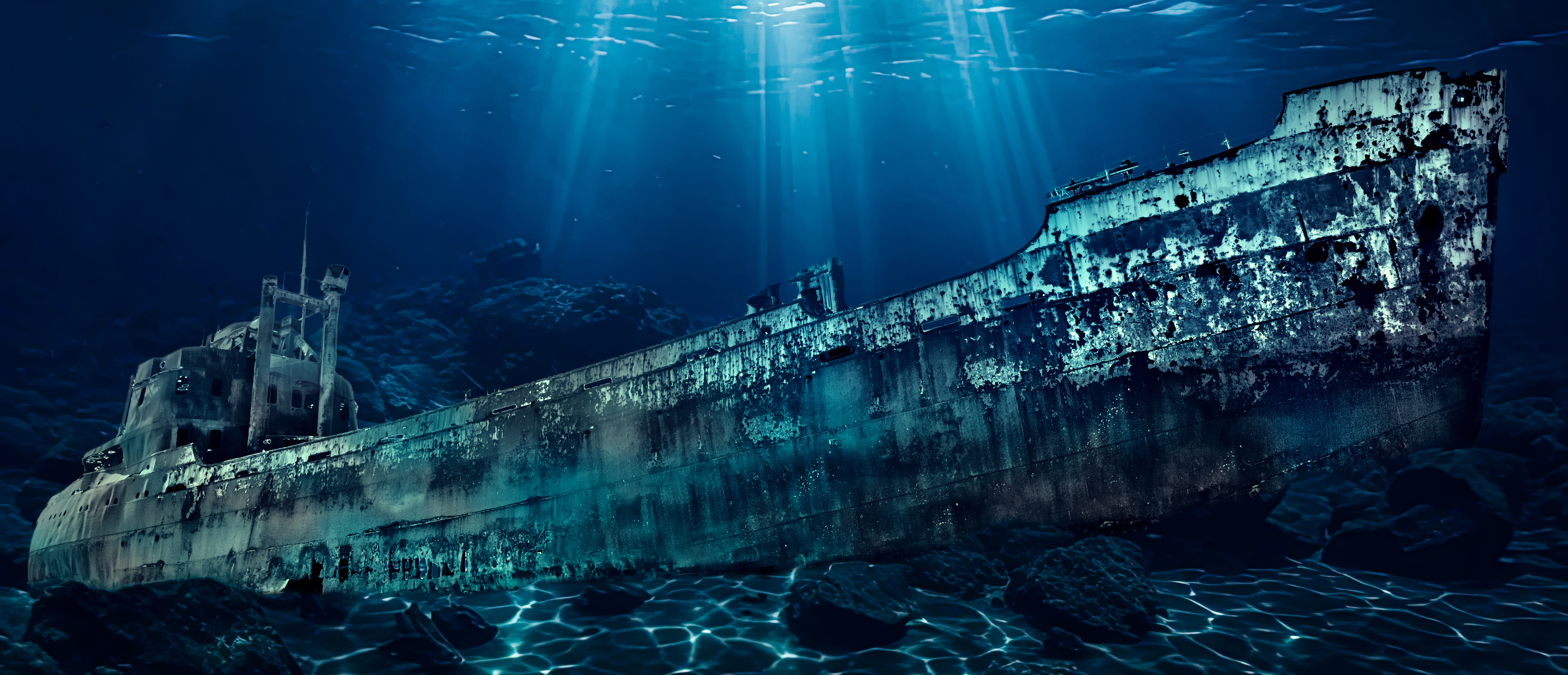Silver and gold coins, jewels and gems – who doesn’t love the adventure of sunken treasure? Experts estimate that up to $60 billion in precious metals lies on the ocean floor, lost long ago with ships of pirates, explorers and merchants alike. And of the estimated 3 million shipwrecks worldwide, only about 1% have actually been explored, leaving countless treasures still waiting to be found.
Treasure can mean many things: gold doubloons, silver ingots, diamonds, emeralds, rubies, famous artwork, ancient weapons and more. But at Garfield, we’re naturally fascinated by gold – so we’ve rounded up some of the shipwrecks richest in it.

San Jose Galleon
The San José, sunk in 1708 off the coast of Colombia during the War of the Spanish Succession, is the richest shipwreck discovered so far, with treasure estimated at $20 billion. The galleon was carrying gold, silver, and emeralds when it sank. The wreck lies around 2,000 feet deep, far away from any sunlight – which experts believe has helped preserve it.
Since its discovery in 2015, multiple parties including Colombia, Spain, the U.S. Sea Search Armada, and several Bolivian communities have tried to claim ownership of the wreck and its contents. Legal disputes are still in progress today!
The Nuestra Senora De Atocha
Part of the 28-vessel 1622 Spanish treasure fleet, the Atocha sank in a hurricane near Cuba. Discovered off the Florida Keys in 1985 by Mel Fisher, the wreck contained about $400 million in treasure, including 24 tons of silver bullion, ingots and coins, 125 gold bars/rounds and 1,200 pounds of silverware. That’s a lot of silver!
S.S. Central America
In 1857, this 280-foot wooden-hulled steamer, nicknamed the “Ship of Gold,” sank off the Carolinas during a hurricane carrying over two tons of gold coins, worth around $8 million at the time. The wreck was discovered in 1988, and 346 gold ingots were recovered from 7,200 feet below the ocean’s surface!
S.S. Gairsoppa
Sunk by a German submarine in 1941 while transporting 7 million ounces of silver bullion, tea and pig iron, the Gairsoppa rested nearly three miles deep in the North Atlantic. In 2013, Odyssey Marine Exploration conducted the deepest and heaviest recovery of precious metals from a shipwreck in history.
RMS Titanic
The Titanic may not have carried much gold, but it remains one of the most famous maritime disasters in history. The massive ship sank in 1912 and was discovered 73 years later, 12,500 feet deep in the North Atlantic, by a joint American-French expedition. The wreck still had many recognizable features when it was first discovered, but it’s now deteriorating due to several deep-sea conditions, including a metal-eating bacteria called Halomonas titanicae.
Though the Titanic carried personal gold items like jewelry, it didn’t transport cargo-sized amounts of gold. Notably, John Jacob Astor’s gold watch, recovered from his body after the sinking, sold at auction for $1.5 million in 2024, setting a record for Titanic memorabilia.
Flor de la Mar (Undiscovered)
Flor de la Mar, a 16th-century Portuguese vessel, sank in 1511 near the Strait of Malacca. Believed to be loaded with about $2 billion worth of gold and precious stones, it’s one of the most coveted shipwrecks in the world!
Do Shipwreck Hunters Have Rights to Claim Treasure?
The art of shipwreck hunting is a time-consuming, expensive pursuit that requires lots of patience and persistence. While advancing technology has made it easier to scan the ocean floor, locating a lost shipwreck is still no small feat.

And when a wreck is found – especially one brimming with treasure – the question arises: who has rights to its contents? This is where things can get complicated – many worry that looters might sell recovered artifacts to private collectors, depriving the public of the opportunity to see and learn from them. That’s why archaeologists and maritime authorities are actively working to protect historically significant sites that have already been discovered, such as the RMS Titanic and the San Jose.
Regardless of ownership debates, treasures recovered from shipwrecks have been valued in the billions, sparking public fascination around the world.
Golden Opportunities
Whether it’s deep-sea diving, beachcombing, panning rivers, or urban mining through e-waste recovery, there are countless ways to search for gold, silver, and other precious metals. And with today’s soaring metal prices, even a small amount of scrap gold can be surprisingly valuable.
If you have unwanted precious metals in the form of jewelry, silverware, or even a gold dental crown, Garfield Refining can help you monetize your scrap for maximum value. Trusted since 1892, we’re known for providing the industry’s highest payouts and best customer service.
Looking to cash in on your gold, silver, platinum or palladium scrap? Download a free, fully-insured shipping label to get started today!

